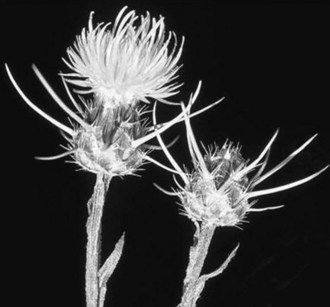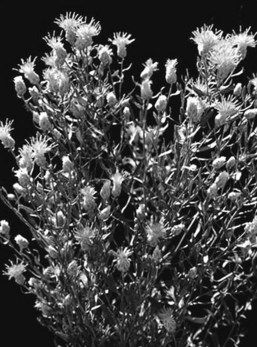Yellow Star Thistle and Russian Knapweed Toxicosis
Basic Information 
Epidemiology
Geography and Seasonality
Both plants were unintentionally introduced to North America and have become highly invasive noxious weeds in much of the western United States. Yellow star thistle is a very common annual or biennial in the west coastal states and is sporadic in most other states (Figure 1). Russian knapweed is a particularly problematic perennial in the intermountain states but is present in all states (Figure 2).
Clinical Presentation
Physical Exam Findings
• Hypertonicity of the facial muscles may give a stiff, wooden appearance to the face.
• The lips and tongue are hypertonic, and the jaw may be held open or tightly closed.
• Chewing and prehension of food are impaired. Food may be held in the mouth. Dehydration, severe weight loss, and depression develop rapidly.
• The swallowing reflex is unimpaired. Some horses may learn to drink by submerging their head into a deep bucket or trough of water.
Stay updated, free articles. Join our Telegram channel

Full access? Get Clinical Tree




